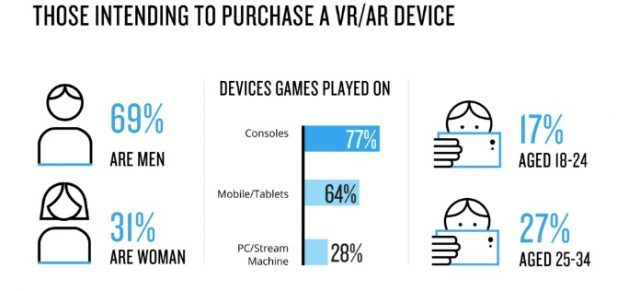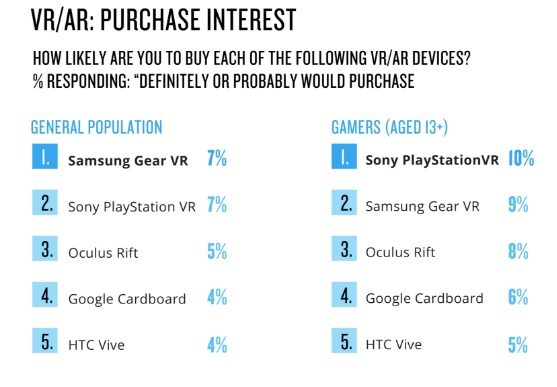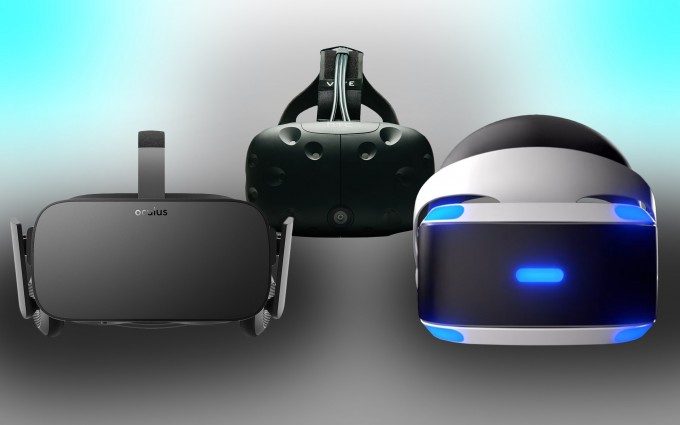A new report from Nielsen suggests that not only is public awareness of virtual reality at record levels, it’s nearly doubled year on year.
Away from business analysts’ wildly varying estimations on how much virtual reality as a business segment is and/or will be worth, it’s very difficult to gauge just how well VR is doing as a technology outside of enthusiast communities. We know that Samsung has confirmed more than 5 million Gear VR units are now in the wild for example, and of course the headlines of Sony surprising themselves with PlayStation VR’s early sales figures – approaching 1 Million going in to 2017. But just how much is VR on people’s radar?
A new report just published from gaming statistics stalwarts Nielsen, suggests that visibility of immersive entertainment and the desire to own hardware that can deliver it is looking pretty healthy heading into the 2nd half of 2017, amongst millennials at least.
Nielsen’s ‘U.S Games 360 2017‘ report states that from over 2000 people (50% male/female split) interviewed, 27% of people aged between 25-34 said that they intended to buy a VR headset, with 17% of 18-24 year olds saying the same. Of that group, 69% were men, 31% were women.


In terms of which VR platform those people were looking to invest in, 10% of people who identified themselves as gamers (over the age of 13) stated that they were looking to buy a PlayStation VR, with 9% looking to opt for Samsung’s Gear VR. The Oculus Rift follows close behind with 8% with the HTC Vive trailing surprisingly far behind at 5%. Groups identified by Nielsen as ‘General Population’ responded similarly, although overall intent was lower and Samsung’s Gear VR topped the poll at 7%.


And in terms of gauging overall awareness of virtual reality platforms, Nielsen found that 34% of the general population over 13 years knew about the Gear VR, with the PlayStation VR recognised by 26% and the Oculus Rift 25%. Again, somewhat surprisingly, the HTC Vive trails at 10% recognition among those polled.
A similar trend, albeit with higher overall recognition, was present among gamers over 13 too.
Generally, when compared with other gaming technology, VR adoption still ranks quite low but according to Nielsen, overall awareness of VR is up from 28% of the general US population in 2016 to 51%, that’s an impressive bump in stats.
Overall then, it’s no surprise that something like the Gear VR, which has been marketed intensively by Samsung alongside its best selling Galaxy smartphones and is sold at a low relative price (assuming you’re already buying a phone of course) tops the charts. PSVR’s high ranking here is expected too, given the market penetration of the PlayStation 4 and its appeal as a mass market option. What is surprising, and I suspect difficult to recognise among VR enthusiasts, is the HTC Vive’s poor ranking against its direct competitor the Oculus Rift. Given the dearth of real-world sales figures for either device though, it’s almost impossible to gauge just how accurate this is.
You can download the full U.S Games 360 report for 2017 right here.

